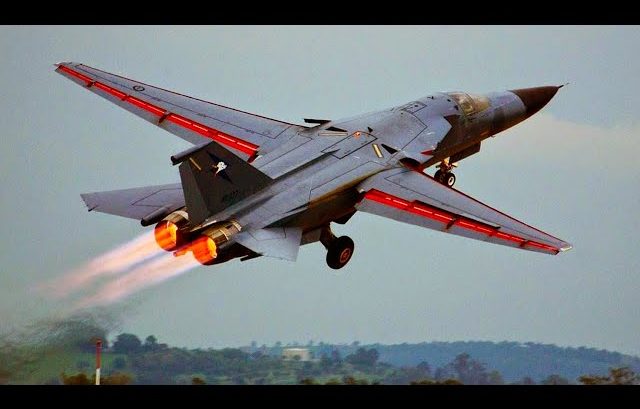The F-111 wasn’t like just any other aircraft. It was ordered by Robert McNamara himself to build a plane that could fit roles requested by the Navy and Air Force.
Built as a fighter, bomber, and interceptor, the plane pioneered the concept of terrain-following radar, variable-sweep wings, and afterburning turbofan engines that are unique for their time.
1. It was the result of the Tactical Fighter Experimental or TFX program
After the Soviets shot down a U-2 spy plane, the US Air Force turned their attention away from high-altitude bombers that were susceptible to missile strokes to low-level penetration. This was because it’s easy for fighter jets to avoid radar detection at lower altitudes.
2. After General Dynamics secured the contract for the low-level bomber, the company worked alongside Northrop Grumman drafting the plane’s landing gear, assembly, and fuselage
The defense duo then worked together to test the F-111.
3. It could manage altitude extremes
The F-111 has an extremely high service ceiling of 66,000 feet. However, its low altitude capacity is what really mattered. It could fly at a height of just 200 feet above the ground with a speed of up to 550 mph or more.
It’s also an extremely practical choice for entering territories with a low chance of detection.
4. The F-111 had a top speed of Mach 2.1
It could reach 915 mph at sea level, and soar to Mach 2.15 at cruising altitude.
5. It featured advanced armament capabilities
This multi-armament bomber is equipped with multi-armament bomber with one 20mm 6-barrelled Gatling cannon gun and nine hardpoints.
For missiles, it can drop an AGM-69 SRAM thermonuclear weapon or an AGM-130 stand-off bomb.
6. It’s the first variable-sweep wing production aircraft
It was an iconic swing-wing fighter that could sweep back its wings before returning to its original position mid-flight. This technology allowed the plane to modify its shape while flying in the air. It was also dubbed as ‘the pig’ likely because of its long nose.
7. Approximately 563 F-11s were produced
The plane was being used in the US and Australia. The plane’s operators
were the 366th Tactical Fighter Wing of the US Air Force Air Combat Command, Strategic Air Command, the No. 1 Squadron of the RAAF, and NASA.
8. There are five variants of the F-111
The F-111 was divided into five categories, mainly, the F111, BF111, CEF-111A Raven, F-111K, and Boeing AFTI/F-111A Aardvark.
The F-111B variant was used by the US Navy while the F-111C was used in Australia.
9. Dozens of F-111s are now on display in museums
Although no longer in service, this plane is now on display with museums putting it on show in Australia, the United Kingdom, and the United States.
10. It’s sound ventures into the interstellar space
The sound of the F-111 is not purely Earth-bound. One of the sounds gathered on the Voyager Golden Record is a flyby of a F-111.
As of 2021, the Voyager spacecraft is approximately 11.7 million miles from Earth.



